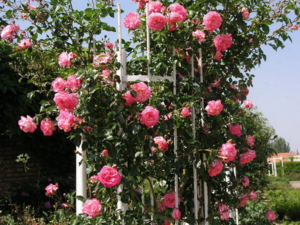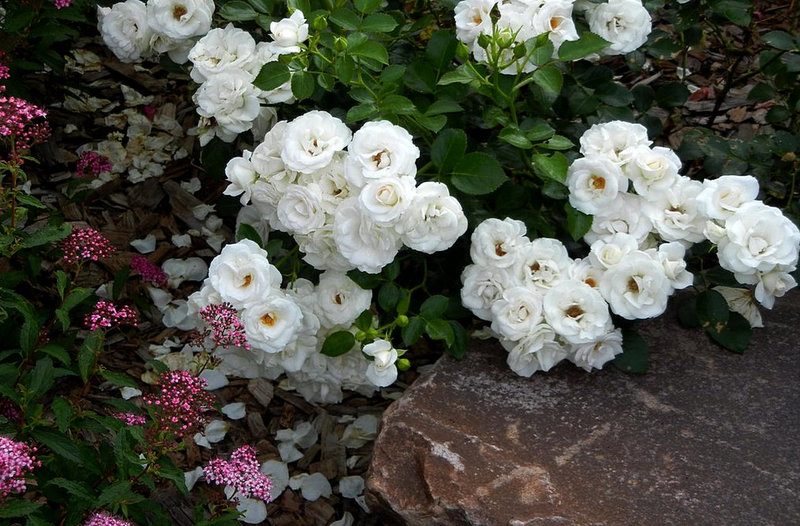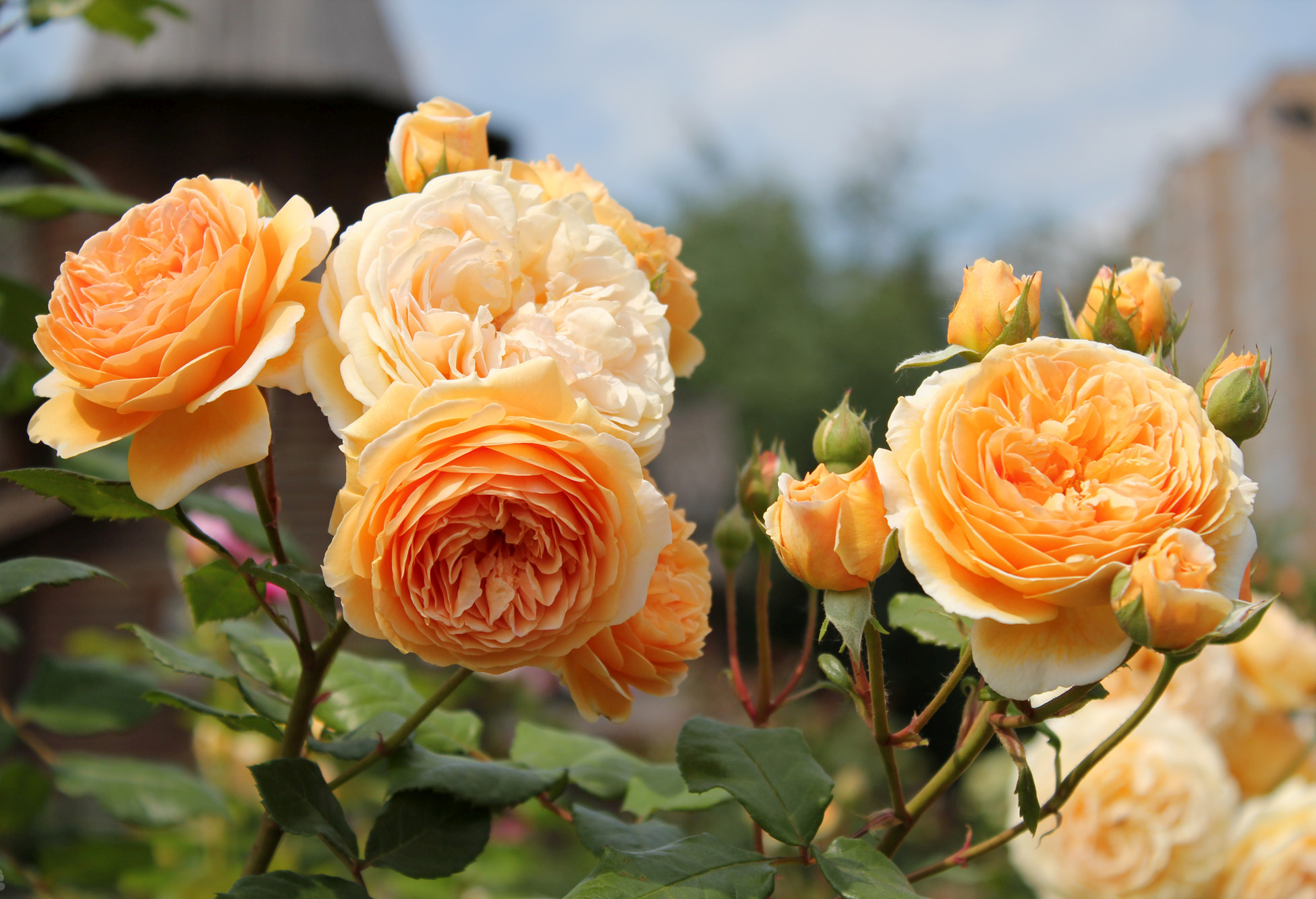Among the people, the lavatera was called hautma or wild rose. The homeland of this beautiful ornamental plant is Central Asia. Gardeners in North America, Australia and Europe actively cultivate lavender, admiring its unusually beautiful flowering. Growing wild roses from seeds has also become very popular in Russia.
Content
Lavatera one-year-old - planting and care
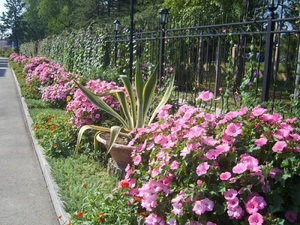 The wild rose prefers a warm climate, however, it feels great in central Russia, where it can grow even on poor rocky land. The shrub is not afraid of hot sun, drought, frost and winds, besides, the lavater is completely undemanding to the composition of the soil.
The wild rose prefers a warm climate, however, it feels great in central Russia, where it can grow even on poor rocky land. The shrub is not afraid of hot sun, drought, frost and winds, besides, the lavater is completely undemanding to the composition of the soil.
Suitable for planting a wild rose soil with any composition... But it should be borne in mind that a more ornamental plant will grow on fertile land.
Lightweight, well-drained soil is ideal for growing Lavater. Tall varieties need the construction of additional trellises and supports.
As for the choice of planting site, then preference should be given well illuminated sunny areas... This is explained by the fact that in partial shade and shade, the flowers do not fully open and do not give a beautiful flowering.
Description lavater, photo
Lavatera is a representative of the Malvov family, in appearance it looks like bushes with small bells. The plant is compact and practically completely covered with flowers... The homeland of the wild rose is considered to be North Africa and Southern Europe.
Today hautma widespread around the world, including regions with temperate climates. Growing a plant with seeds is not a very difficult process, and given the fact that a wild rose reproduces by self-sowing, you don't have to worry about further planting at all. It remains only to adjust the boundaries of the flower garden.
Plant care is about timely watering, fertilizingshaping the crown weeding weeds. Perennial varieties require preparation for winter, annual ones - harvesting dried and faded plants. Hutma can be grown on a balcony or windowsill.
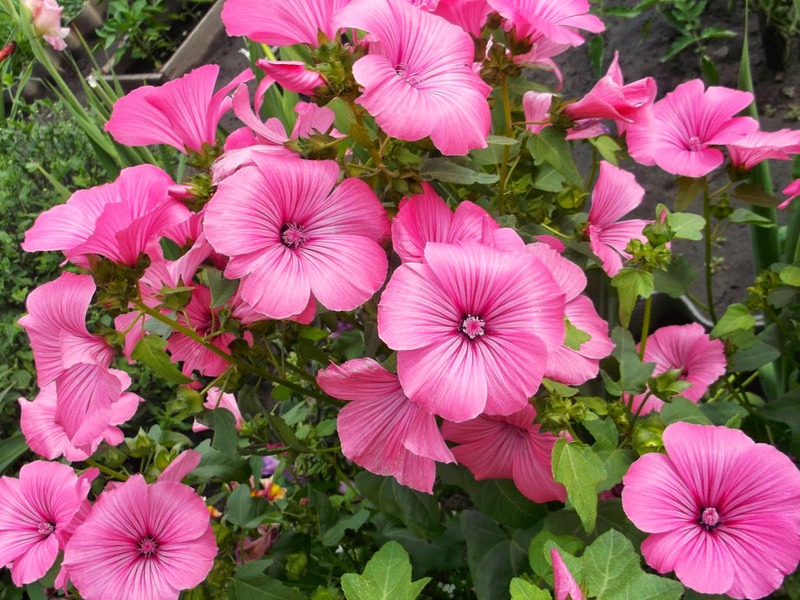
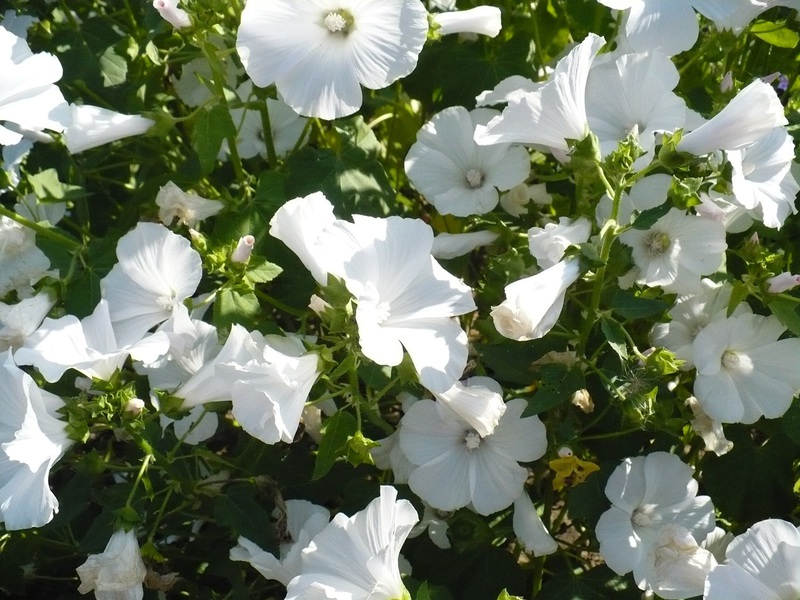
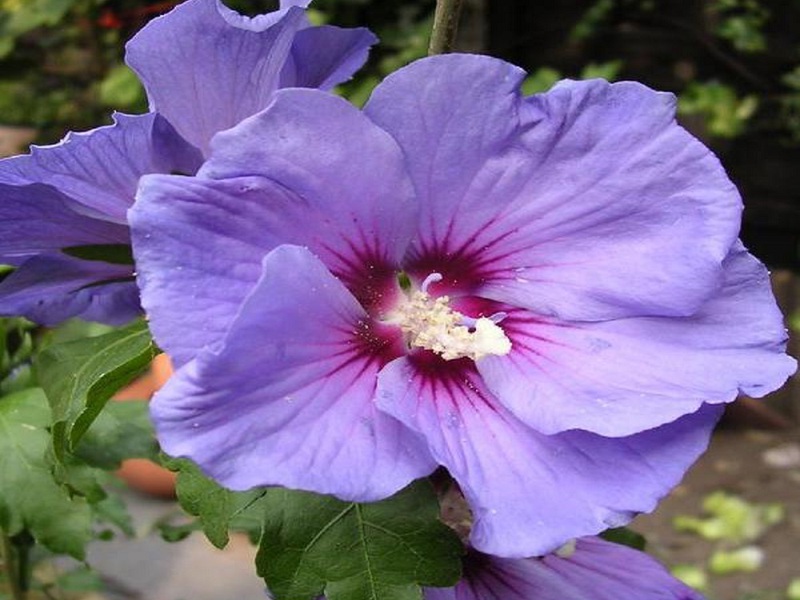
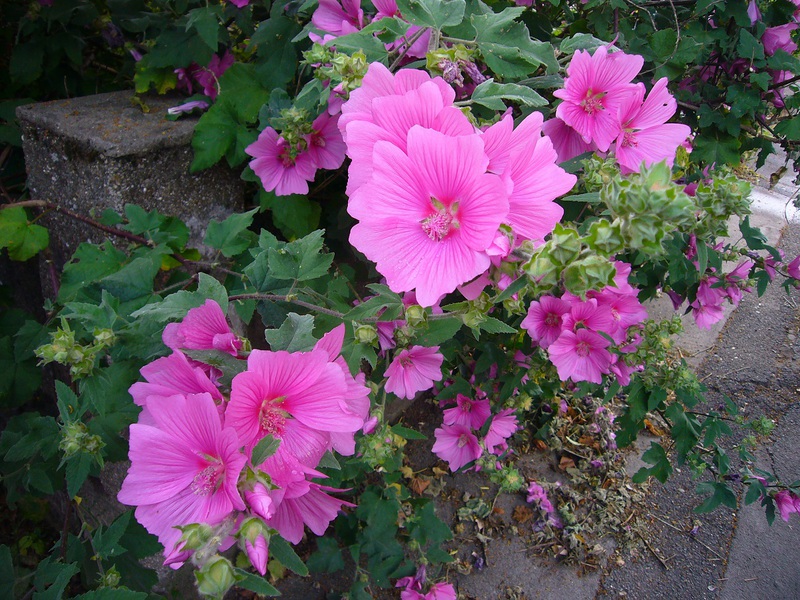
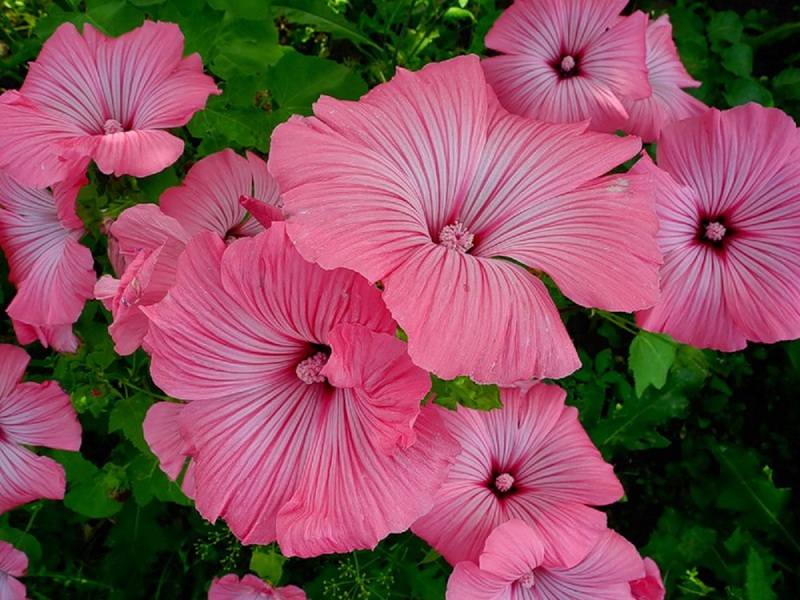
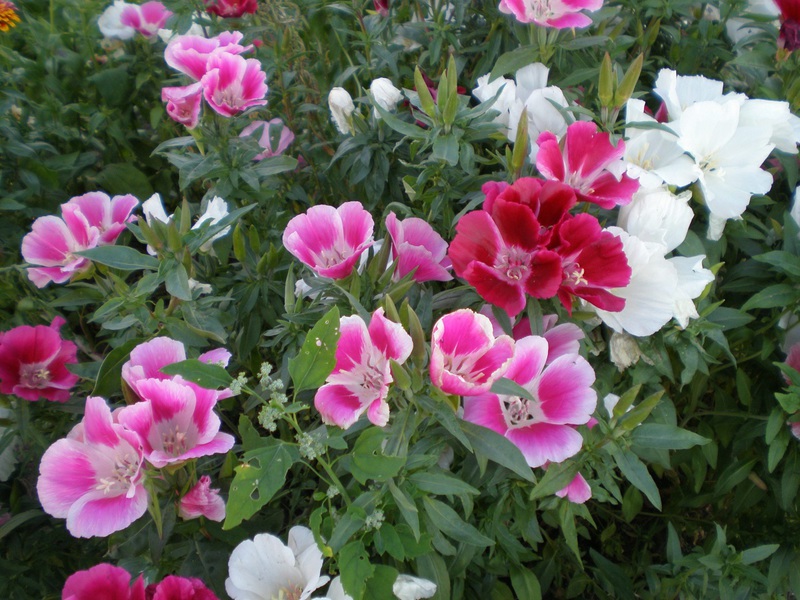
An annual wild rose, when planted in a well-lit area, forms spherical bush... Plant height - 0.6-1.2 m. A huge number of buds in varying degrees of maturity ensure continuous flowering of the lavatera from the moment the first flowers open up to frost.
The nature of the location, shape and color of inflorescences depends on the variety. Experienced flower growers grow several types of lavater on their site at once, thereby creating a voluminous flower garden with bushes of different sizes and colors.
Popular varieties of annual wild roses include the following:
- Tangara is a small bush (up to 0.5 m). Buds are funnel-shaped, deep red.
- Mont Blanc. Annual bush up to 60 cm high, inflorescences are large, white.
- Silver cap is an annual with flowers of lilac, silver or bright pink shades. Plant height - up to 60 cm. Flowering - from July to October.
- Beauty is a profusely blooming annual variety, the height of the bush is up to 60 cm. Flowers are red, dark pink, pink and white.
- Three-month Lavater. Plant height - up to one m. Flowers are white and pink.
- Ruby carpet is an original plant with ruby flowers.
Of perennials, the variety should be noted Lavatera Thuringian... It is a perennial, up to 2 m high, with large inflorescences (more than 5 cm) of a purple or pastel shade. Flowering continues until October.
Dwarf perennial varieties:
- Byte Sherub. Even when creating ideal growing conditions, the height of the plant does not exceed 35 cm. Flowers are funnel-shaped, white.
- Pink beauty. The maximum plant height is 40 cm. The buds are deep pink in color with dark veins characteristic of this species.
- Novella. Differs in early flowering and is perfect for growing as a pot culture, since in a limited space the height of the bush is no more than 20 cm.
In addition, there are other varieties of wild rose that differ in the shape of the inflorescence, flowering time, bush size and color shades.
Breeding methods of Lavater
 Perennial and annual wild rose grown from seed... Sowing is done in the spring after the end of frost. If you want to please yourself with the early flowering of a wild rose, then the seeds must be sown for seedlings in late February or early March.
Perennial and annual wild rose grown from seed... Sowing is done in the spring after the end of frost. If you want to please yourself with the early flowering of a wild rose, then the seeds must be sown for seedlings in late February or early March.
The optimal timing for planting a lavater in the ground:
- End of February-March. Seeds are sown in room boxes for seedlings.
- March, April. In regions with a warm climate, seeds are sown in open ground.
- End of April-May. Seedlings are planted and seeds are sown in the ground.
Growing from seeds
 Planting material can be purchased at a specialized flower shop, or you can use your own seeds collected on the site in the fall.
Planting material can be purchased at a specialized flower shop, or you can use your own seeds collected on the site in the fall.
Quality Lavatera seed has a grayish or light brown shade and fan-shaped.
Site selection and soil preparation. Since the wild rose is a light-loving plant, it should be placed in such a way that future bushes are not shaded by taller neighbors growing nearby, as well as by the fence and walls of buildings.
Soil preparation:
- add prepared rotted manure;
- dig up the site;
- evenly distribute mineral dressing, which includes nitroammofoska, potassium sulfate, urea and superphosphate, all components are taken in 1 tsp;
- level the soil with a rake.
Planting Lavatera seeds in open ground
In the open, seeds are sown as follows:
 In a well-dug area, shallow grooves are made at a distance of 30 cm from each other (for all varieties, except for dwarf ones). For the latter, the distance between the strips should be 15 cm.
In a well-dug area, shallow grooves are made at a distance of 30 cm from each other (for all varieties, except for dwarf ones). For the latter, the distance between the strips should be 15 cm.- Moisten furrows.
- Sprinkle the seeds with soil (1 cm layer).
- To avoid air pockets, compact the soil.
In order to ensure good germination, the seed plot should be cover with a transparent film... When the hautma sprouts and reaches a length of 5-6 cm, the shelter can be removed.
After this, the first loosening of the soil should be carried out, followed by light hilling of the seedlings. At the same time, you can feed mineral fertilizers. Further care of the plants consists in regular watering, which should be carried out as the soil dries up (to a depth of 5 cm).
The stems of tall wild rose varieties must be tied up. If you suspect poor seed quality, more frequent seeding is allowed. If the seeds have sprouted densely, thinning should be carried out.
Growing seedlings and care
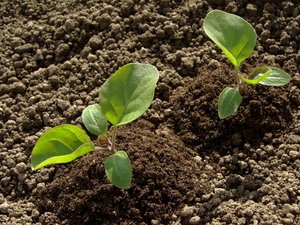 The seedling method of growing wild roses is mainly used by large agro-technical enterprises, but this method is also used quite often in individual farming.
The seedling method of growing wild roses is mainly used by large agro-technical enterprises, but this method is also used quite often in individual farming.
The date of planting seeds in closed greenhouses is determined by the planned date of planting seedlings on a flower bed. That is, if you want to plant the lavatera in open ground in May, the seedlings need to be sown in March.
Seeds are sown in seedling boxes, or better - in special garden cassettes. If you place a seed in each cassette, in the future you will not have to plant the seedlings in separate containers, which means that you will be able to avoid injury to plants during transplantation, the bush will grow stronger and bloom earlier.
If the soil is warmed up to + 15 ° C before planting the seeds, seedlings will appear in 10-12 days. Small sprouts should not be watered, they should only be spray gently.
After sowing seeds, planting containers should be covered with foil and placed in a well-lit place. Subject to the temperature and light conditions, seedlings will appear in 14 days.
The film can now be removed. Further care for the sprouts of the lavater consists in periodic watering and turning the pots around their axis towards the light. As soon as the threat of night frost has passed, the seedlings can be planted in open ground.
The correct selection of a place for planting a wild rose, as well as ensuring optimal conditions for its growth and development and timely care will allow you to form a gorgeous flower garden from powerful and beautiful plants.
